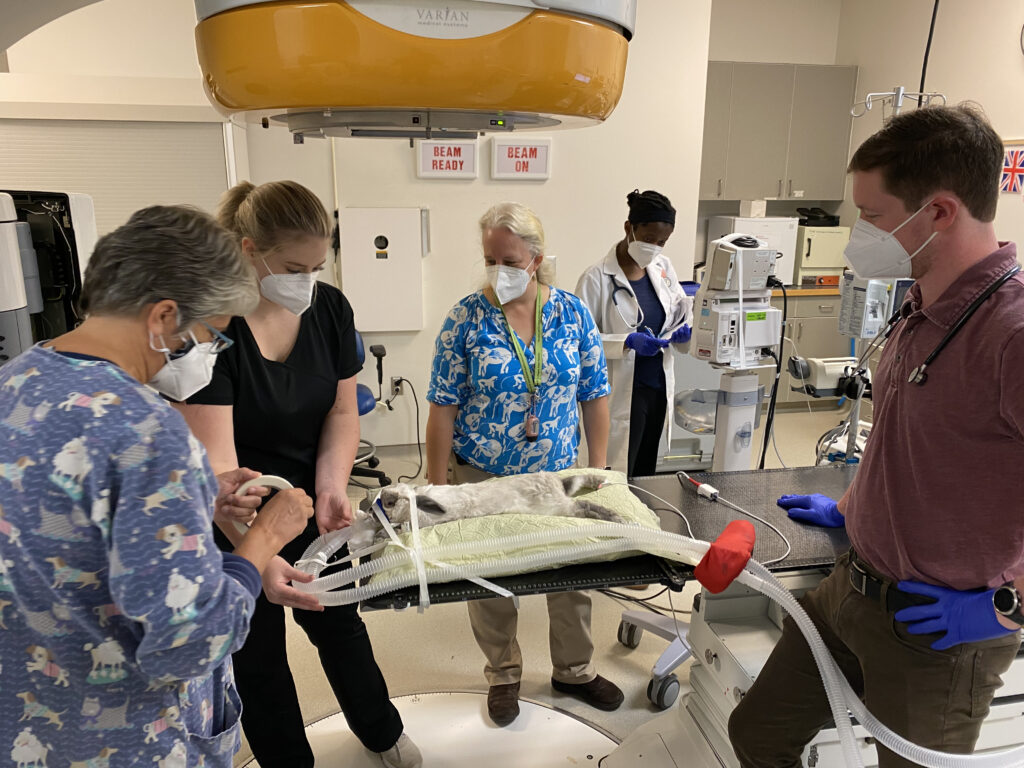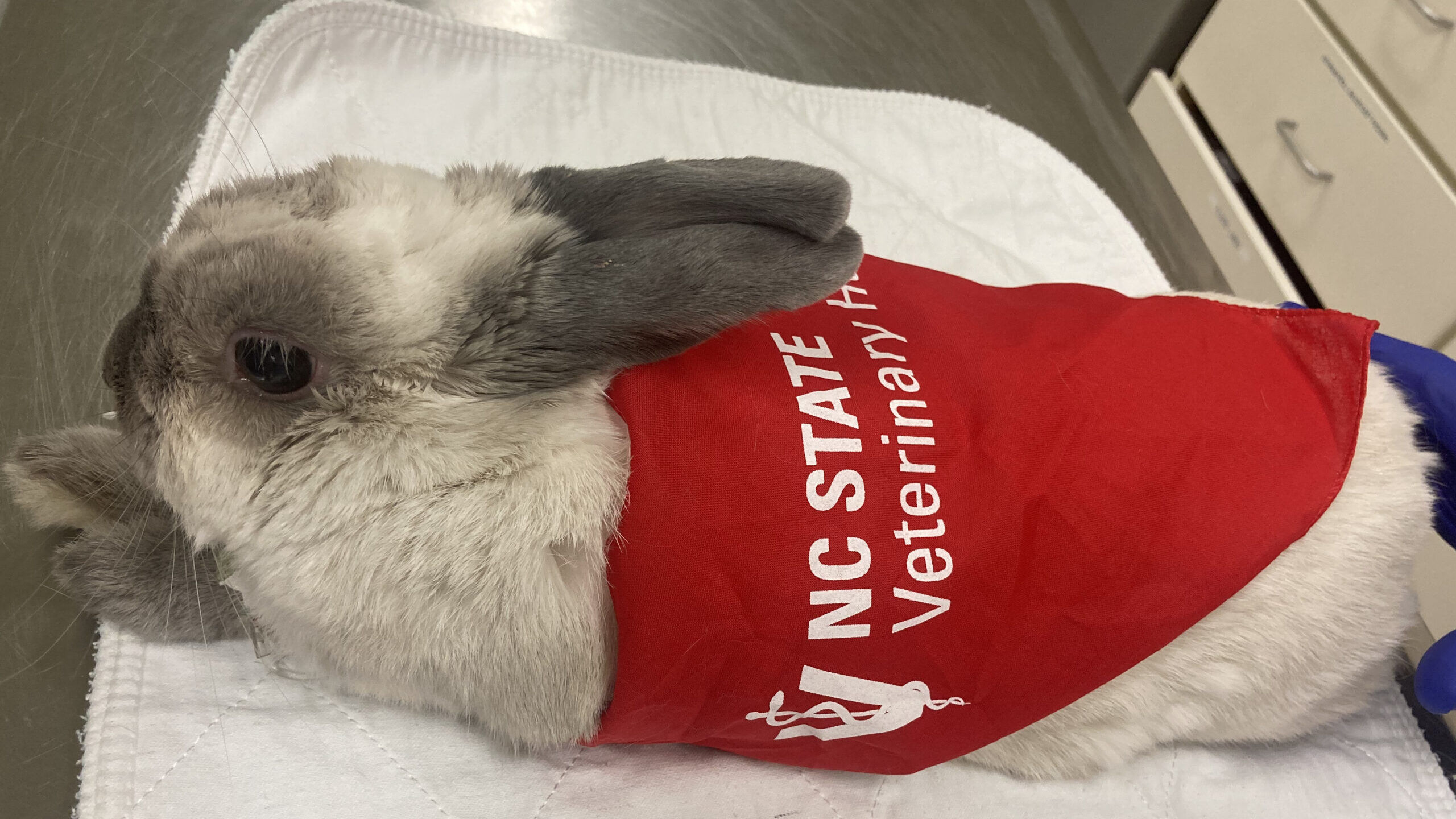In side-by-side booths at an exotic animal veterinary conference in Atlanta a few years ago, Tara Harrison and Michelle Underhill forged a friendship.
Underhill, who for a decade had been helping rehome parrots that had outlived their owners, was representing the Phoenix Landing Foundation rescue she led. Harrison, an associate professor in the NC State College of Veterinary Medicine’s exotic animal service, was promoting the database she helped create that tracks cancer cases, treatments and outcomes in exotic pets.
“With dogs and cats, you pretty much know the odds, but with exotic animals, we’re not there yet,” says Harrison, also the vice president and lead investigator of the Exotic Species Cancer Research Alliance. “I have over 2,000 zoo and exotic animals in [the database] to gain a better understanding of cancer and how cancer treatments help these animals. I think it’s awesome to not only be able to help these animals but to use the real-world, real-time, real cancers to help the species as a whole.”
At the conference, Harrison and Underhill shared their mutual love of exotic animals, including cockatiels. Harrison acquired Herbie, still kicking at age 24, when she was in veterinary school. Underhill’s Chip had lived 20 years, accompanying her through ages 9 to 29.
But it wasn’t a love of birds that brought the women back together this year.
It was a bunny named Louise.
Underhill was in the market for a pet that was a bit more cuddly than her birds. Rabbits, she found, are very clean animals that can be litter-trained. At the time, Underhill lived in Raleigh and, after visiting several Triangle rescues, she adopted Louise from Carolina Pet Rescue in Durham.
“She seemed kind of chill, very cute and has sable point coloring like a Siamese cat,” says Underhill, who immediately began volunteering with the Triangle Rabbits nonprofit. “Like with any other animal, if you want a rabbit who wants to be petted, make sure they like being petted before you take them home.”
Before long, Louise, all 4 pounds of her, had a best friend forever in Daryl, the 12-pound Flemish giant mix that Underhill’s husband adopted from Triangle Rabbits.
“There’s nothing like having a rabbit run up to you when they’re happy to see you and circle your feet,” Underhill says. “They come up to you and push their nose under your foot because they want you to pet them, and you pet them and watch them melt into the carpet because they’re so happy.”
It was the birds, however, that spurred Underhill to leave her job as a librarian in Raleigh to become the executive director of the parrot rescue organization in Asheville for two years.
“So many birds outlive owners, who die of old age or we lose some to other reasons like cancer,” she says. “One of the reasons I refer to it as my two-year sabbatical from libraries is because a couple of friends passed away, one from a blood clot and one from cancer, and they never made it to retirement. I wanted to check off a bucket list thing and give to another cause I care about before coming back to libraries.”
Underhill decided to return to Raleigh this year to become a librarian at the State Library of North Carolina. While packing up in Asheville, she noticed that Louise had a wet nose and was making a strange respiratory noise. Within days of moving, Underhill made an appointment for Louise at the NC State Veterinary Hospital, expecting to hear that the rabbit had an allergy or something caught in her nose.
When a 4-pound rabbit gets a CT scan, it’s easiest just to scan the whole body, Harrison explains. And what the NC State team found wasn’t hay in her nostril but a tumor, a thymoma near her heart.
Because of Harrison’s cancer database that Underhill had heard about at the conference years ago, and her research on the efficacy of cancer treatments for exotic animals and the new, more effective protocol that research uncovered, Louise had a chance.
“I had actually seen Dr. Harrison there at the convention talking about cancer,” Underhill says. “I had actually gone to her sessions. So I knew Louise was in the best hands possible at NC State here.”
And because Petco Love (formerly the Petco Foundation) and the Blue Buffalo Cancer Treatment Fund have created cancer treatment funds at leading vet hospitals like NC State, Underhill had help defraying the costs of treating Louise at a time her finances were stretched because of the move. The companies help pet owners pay for cancer treatments so that the schools can learn from the cases and develop better protocols, saving more beloved pets – and helping understand human cancers – in the long run.

The new protocol for Louise called for five radiation treatments, spaced a week apart, which would subject her to less anesthesia, always a risk, than the previous protocol.
“NC State was wonderful,” Underhill says. “We had to do a drop-off appointment because of COVID-19, and they’d call and tell you when it was about time for the treatment. I knew it was about a half-hour long. And then a doctor would call and let you know she’s fine. She did great. She’s waking up. If NC State treated humans, I’d trust them with my own life.”
Louise, who is 8 or 9 years old, finished her fifth radiation treatment in October. She’ll have a checkup at NC State soon to see whether the radiation got rid of the cancer. All signs are positive.
“I was a little concerned initially because of her age, but NC State answered all of my questions,” Underhill says. “I thought if she could get another two years with her BFF, that would be worth it.”
Now Louise is in Harrison’s database, and her case will help her learn even more about keeping cancer from being the death sentence people fear for their animals and themselves.
“Just because it’s a rabbit or anything — snake, turtle, guinea pig, anything — we can treat them and then in the process we learn more information about how to treat them better and how to let people know more information about how long they might live, which treatments work best,” Harrison says. “With the help of Petco and the research I’m doing, we’re hoping to do even better.”
- Categories:



